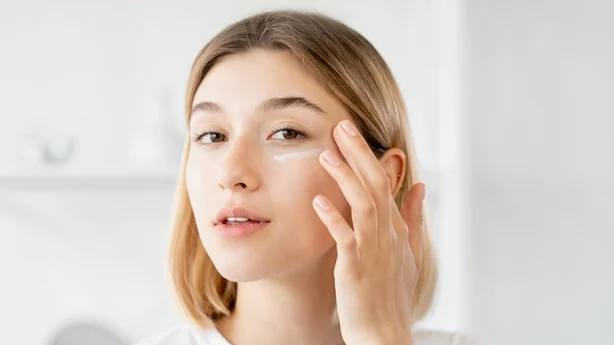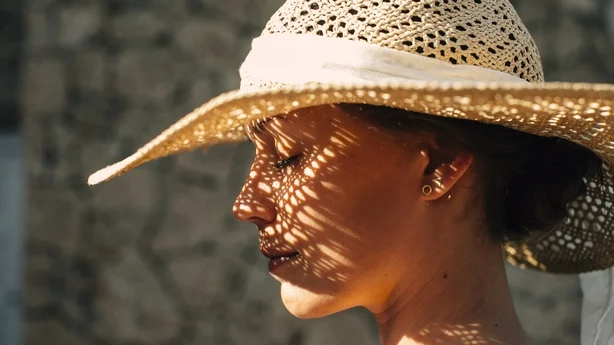As the sunshine threatens to make an appearance, more of us start thinking about using SPF.
Of course, we should all be wearing it year-round – we know this, yet lots of us don’t. In fact, according to new research by skincare brand No7, only 26% of women use SPF on their face every day. Probably because it’s all so confusing.
Is the SPF 30 in your moisturiser enough to see you through an entire day of sunshine? Should you layer ‘proper’ sun protection over the top of your moisturiser if you’re outside a lot? And what about reapplication if you’re wearing make-up? The questions keep coming…

"My advice is always that the best sunscreen is the sunscreen you wear every day, because it’s vital to ensure you include a high SPF in your daily skincare routine, to protect your skin from incidental sun damage," says Clare O’Connor, No7 senior research scientist.
"However, for prolonged, more deliberate sun exposure – for example, sitting outside in the sun for 30 mins at lunchtime, either reapply your daily moisturiser or apply a sun-protection product."
Dr Ifeoma Ejikeme, medical consultant skin expert and founder of award-winning Adonia Medical Clinic, has been working with Westfield’s How We Shop platform to showcase the latest skincare technology to help protect the skin from pollution.
"SPF in moisturisers is not enough on its own," she stresses, especially if you’re spending extended periods in the sun.
"The SPF in moisturisers typically ranges from SPF 15 to 30, but for adequate protection, especially in sunny climates, I recommend using a standalone sunscreen with at least SPF 30 or higher, or even better, an anti-pollution SPF, to protect the skin from environmental impurities and UVA and UVB rays."

How to apply SPF
Sun protection should always be applied after your moisturiser, notes Sara Salih, senior facialist at Pre- salons. "It’s always the last step, so it can be on the surface of the skin to give the best protection. If it’s put under the moisturiser, the moisturiser would act as a barrier between the SPF and the sun."
O’Connor recommends applying a teaspoon or two finger lengths of product to your face and neck, to provide the labelled protection. "If you don’t apply enough," she says, "then you won’t be providing your skin the level of protection you think, so it’s really important to ensure you apply a generous amount, and it’s spread evenly to ensure no missed bits."
Be sure to massage in the product thoroughly, too.
"Generally, the size of a 50p coin is sufficient to cover the entire face and neck," adds Salih. "It’s important that the application doesn’t result in a mask-like feeling, or excessive greasiness and heaviness on the skin, which can lead to breakouts."

What about holidays and weekends, when you’re out and about more?
It’s crucial to wear sunscreen daily, regardless of the weather, season or location you’re in, stresses Ejikeme. "UV rays can penetrate clouds and windows, leading to long-term skin damage and premature ageing."
When holidaying abroad, she advises using a higher SPF sunscreen than you would typically use at home, to provide adequate protection against intense sunlight. And to reapply it frequently – every two hours – especially if you’re swimming, sweating, or spending extended periods outdoors.
O’ Connor agrees: "Regardless of the season or whether you’re at home or in different countries, you should still be applying sun protection every day. Incidental sun damage – which is defined as any brief exposure to the sun, or sun exposure that seems inconsequential – can be responsible for much skin damage.
"We tend to think about sunscreen when we are going overseas or intentionally spending all day outside. But even short bursts of sun exposure cause damage to cells and structural proteins, such as collagen. And this builds up over time, eventually being displayed as visible signs of sun damage, such as dryness, uneven texture, lines and wrinkles, uneven skin tone and loss of firmness."

SPF and make-up
So, now we’re all clear on how often we should be wearing SPF and what type, what happens when you’re wearing make-up and it’s tricky to reapply?
"One of my best tips is to reapply sunscreen using a make-up blending sponge," says O’Connor. "This is a great way to top up your sun protection throughout the day without budging your make-up. If you prefer a more matte make-up look, you can always add powder on top. To maintain protection with or without make-up, you need to regularly reapply."
Salih advises using an SPF in spritz form, which you can lightly spray over make-up. "This will give a light top-up when needed throughout the day," she says.
And Ejikeme recommends wearing a wide-brimmed hat or seeking shade, to help reduce sun exposure when you can’t reapply sunscreen. But, she adds: "If you’re spending prolonged periods outdoors, it’s best to prioritise sun protection over make-up, and find opportunities to reapply sunscreen whenever feasible."
Disclaimer: The copyright of this article belongs to the original author. Reposting this article is solely for the purpose of information dissemination and does not constitute any investment advice. If there is any infringement, please contact us immediately. We will make corrections or deletions as necessary. Thank you.






